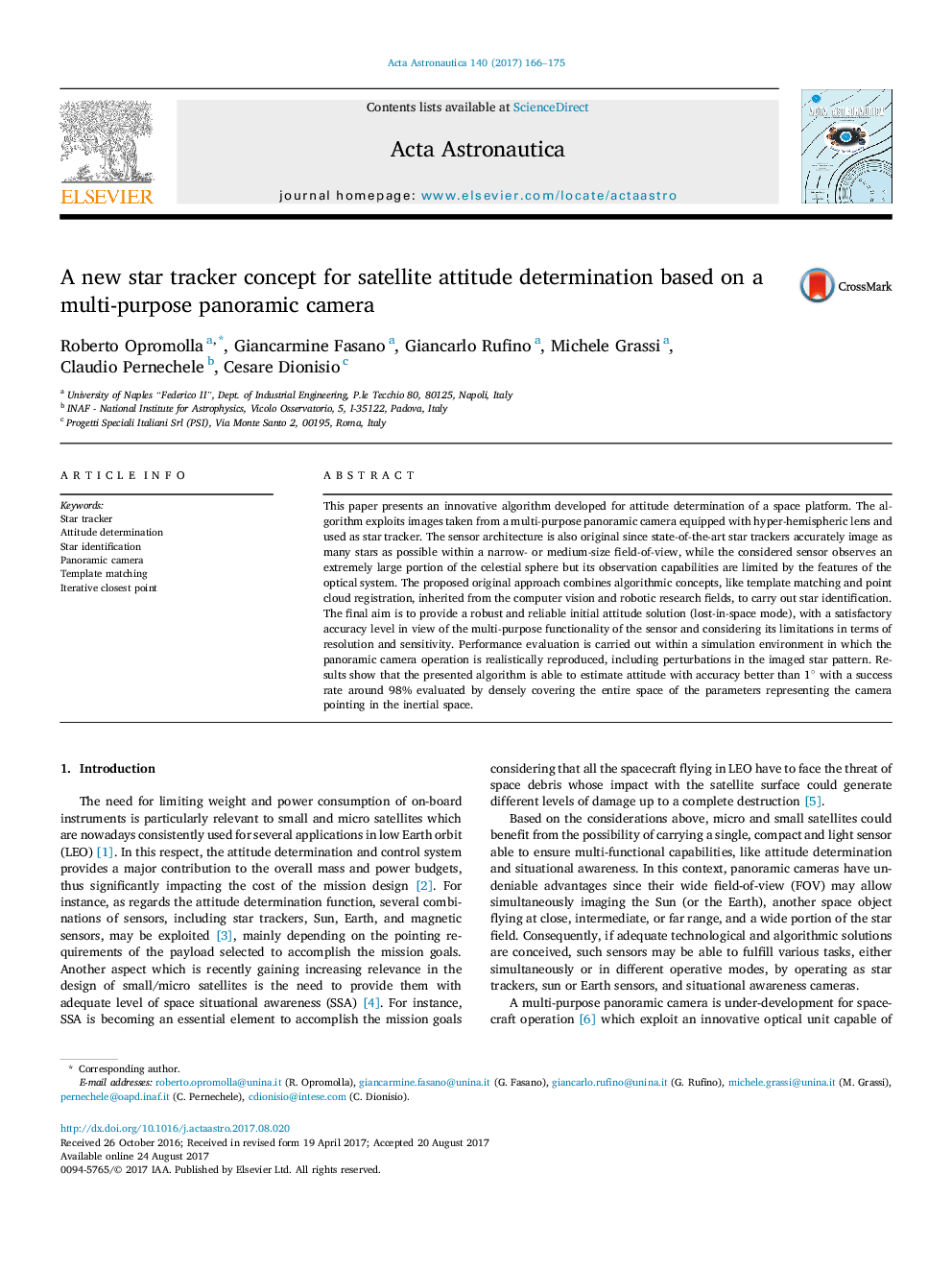| Article ID | Journal | Published Year | Pages | File Type |
|---|---|---|---|---|
| 5472108 | Acta Astronautica | 2017 | 10 Pages |
Abstract
This paper presents an innovative algorithm developed for attitude determination of a space platform. The algorithm exploits images taken from a multi-purpose panoramic camera equipped with hyper-hemispheric lens and used as star tracker. The sensor architecture is also original since state-of-the-art star trackers accurately image as many stars as possible within a narrow- or medium-size field-of-view, while the considered sensor observes an extremely large portion of the celestial sphere but its observation capabilities are limited by the features of the optical system. The proposed original approach combines algorithmic concepts, like template matching and point cloud registration, inherited from the computer vision and robotic research fields, to carry out star identification. The final aim is to provide a robust and reliable initial attitude solution (lost-in-space mode), with a satisfactory accuracy level in view of the multi-purpose functionality of the sensor and considering its limitations in terms of resolution and sensitivity. Performance evaluation is carried out within a simulation environment in which the panoramic camera operation is realistically reproduced, including perturbations in the imaged star pattern. Results show that the presented algorithm is able to estimate attitude with accuracy better than 1° with a success rate around 98% evaluated by densely covering the entire space of the parameters representing the camera pointing in the inertial space.
Keywords
Related Topics
Physical Sciences and Engineering
Engineering
Aerospace Engineering
Authors
Roberto Opromolla, Giancarmine Fasano, Giancarlo Rufino, Michele Grassi, Claudio Pernechele, Cesare Dionisio,
